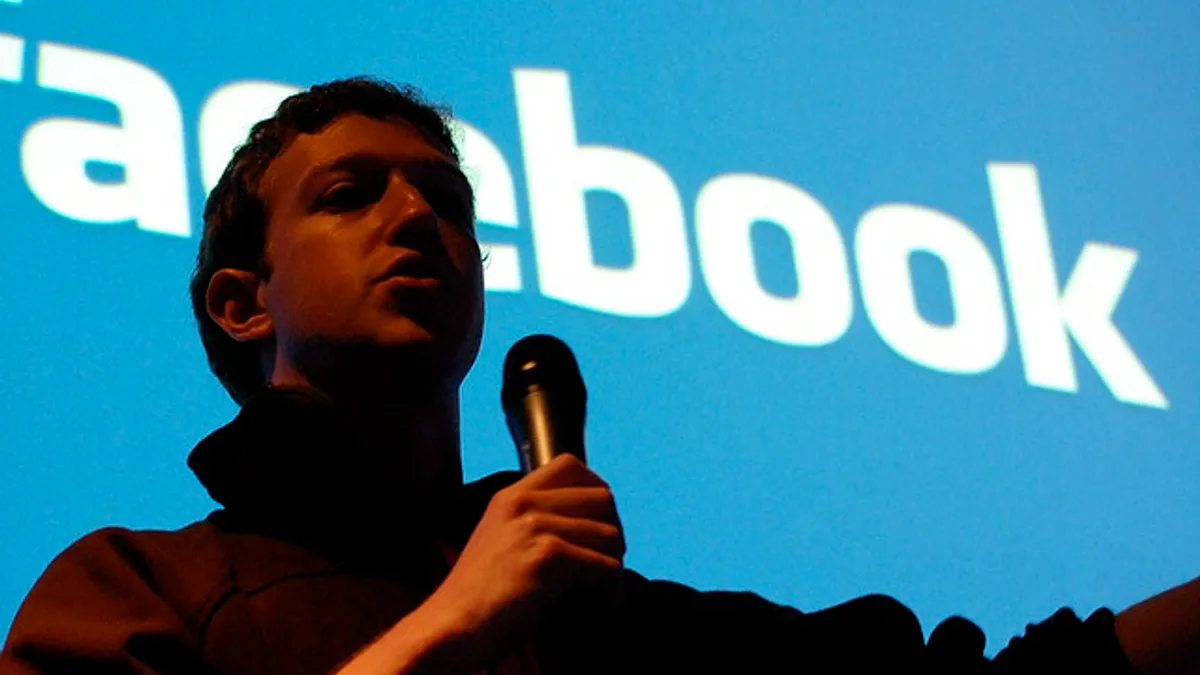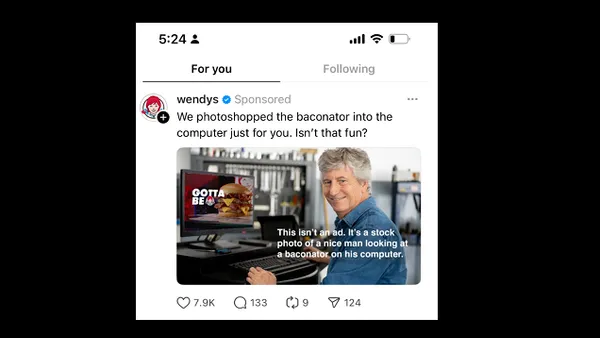Dive Brief:
- Facebook is no longer going to charge marketers for "social clicks" – likes, shares and comments – on ads, and only count what it calls “link clicks” as defined by ad objectives.
- "Link clicks" include clicks to other websites and clicks to install apps.
- This move is one of multiple changes to how Facebook is approaching advertising on its platform.
Dive Insight:
Facebook is keeping marketers on their toes with a rash of incremental changes to the social media platform. It recently rolled out a new mobile-friendly logo, ramped up its focus on video and announced it would begin sharing ad revenue with video partners, is testing its video ad pricing model, and has altered its newsfeed algorithm to emphasize video. Along with the logo change, Facebook changed the order of its anonymous user icons, placing the female icon in front of the male icon.
Now, Facebook has announced it is changing its policy that previously counted all ad clicks the same when charging marketers for the ad, whether it was a clickthrough on a call-to-action to an outside website or just a social click in a user liking an ad. Clicks that advertisers will be now charged for are what Facebook calls “link clicks” such as: clicks to another website (including call-to-action clicks that lead to another website such as “shop now”), clicks to install an app, clicks to Facebook canvas apps and clicks to view a video on another site.
At the Facebook for Business blog, the company explained the move: “Advertisers come to Facebook to drive business goals, like in-store traffic and website clicks, and they need to know how effective their ads are at driving their stated goal. That’s why starting today, as part of our latest API release, we’re updating the definition of cost per click (CPC) on Facebook to only include clicks to websites and apps, and not likes, shares and comments. This update is intended to help advertisers better understand how their ads perform against their objective.”














